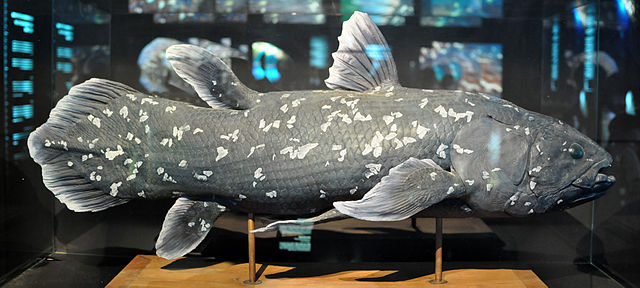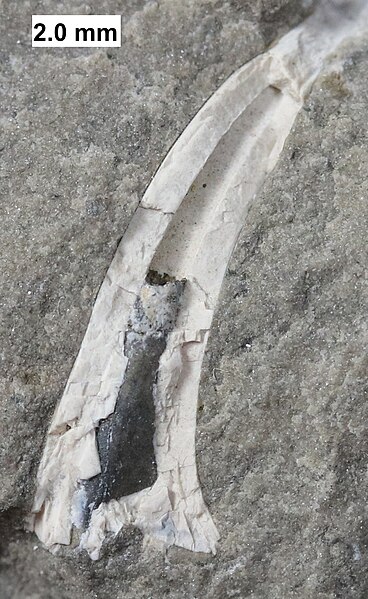Coelacanths are an ancient group of lobe-finned fish (Sarcopterygii) in the class Actinistia. As sarcopterygians, they are more closely related to lungfish and tetrapods than to ray-finned fish.
Coelacanth
Fossil of Coelacanthus granulatus, the first described coelacanth, named by Louis Agassiz in 1839
Reconstruction of West Indian Ocean coelacanth
Preserved Latimeria menadoensis, Tokyo Sea Life Park, Japan
Sarcopterygii — sometimes considered synonymous with Crossopterygii — is a clade including both a group of bony fish commonly referred to as lobe-finned fish, and tetrapods. They are characterised by prominent muscular limb buds (lobes) within their fins, which are supported by articulated appendicular skeletons. This is in contrast to the other clade of bony fish, the Actinopterygii, which have only skin-covered bony spines supporting the fins.
Guiyu oneiros, the earliest-known bony fish, lived during the Late Silurian, 419 million years ago). It has the combination of both ray-finned and lobe-finned features, although analysis of the totality of its features places it closer to lobe-finned fish.
Tooth from the sarcopterygian Onychodus from the Devonian of Wisconsin
Image: Latimeria Paris
Life restoration of Sparalepis tingi and other fauna from the Silurian of Yunnan








